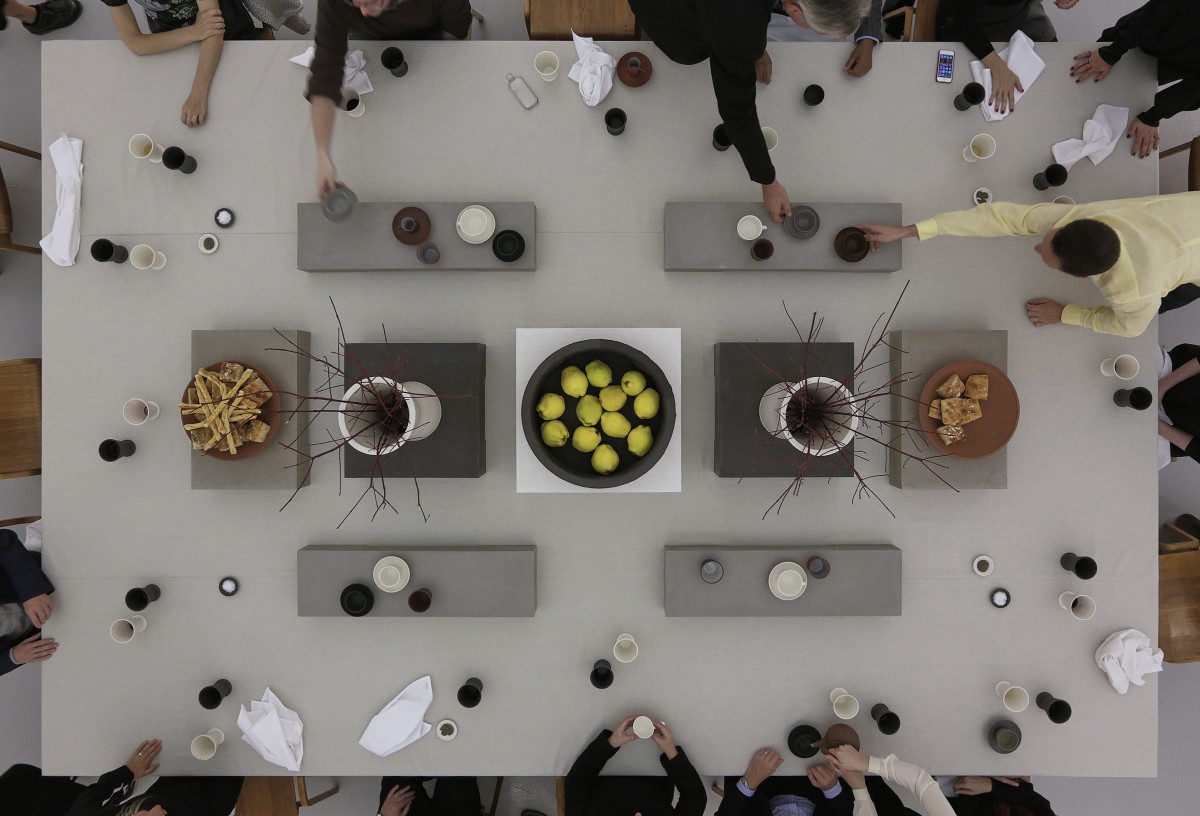


Photography: Marcus Leith and Jan Baldwin
I should declare my hand from the outset here: I have, until very recently, been a life-long craft-denier. I am in a process of rehabilitation, and must thank a number of patient individuals, who know who they are, for gently easing me out of this state of profound ignorance. I am therefore probably the least qualified person imaginable to address the most recent exhibition of work by the very distinguished ceramicist, and academic, Julian Stair. But I will plough on, with all the zeal of a recent convert.
Beginning with first principles: our relationship to clay is ancient. Earth to earth: for millennia people across the globe have answered an urge to craft the human form from mud. Tiny figures dating back to the Neolithic era and imbued with powerful metaphysical qualities can be found from South America, through ancient Mesopotamia, across Europe and beyond to Oceania. Whether fetishes, surrogates, avatars or magical talismans of another kind, these figures sometimes pre-date the use of clay for functional vessels. Our relationship to clay is possibly closer than to any other material: in its raw form it can stand in for the human – God created man from clay – ashes to ashes, dust to dust – fashioned in to a vessel it becomes a metaphor for the fragility and temporality of human life.
The last exhibition Julian Stair made toured to mima in Middlesbrough in 2012 and then to the National Museum of Wales in Cardiff and Winchester Cathedral in 2013 before finally coming to Somerset House in London this summer. Quietus addressed the human form at the point of death. The exhibition comprised a series of vessels designed to contain the body, or to evoke it more obliquely by using its profile to create monumental pots that alluded to sarcophagi or cinerary urns. It puts me in mind of some of the early work of Antony Gormley – his Bed, 1980-81, for example is a platform of sliced white bread from which the forms of two figures have been eaten away. It has a powerful funerary quality. The thousands of clay figures in Gormley’s Field for the British Isles, 1993, meanwhile evoke the multitude in a way that connects the human to the elemental. One bone china work in Quietus actually incorporated the remains of Stair’s late brother-in-law. (I confess readily that I did not ever imagine that bone china really contains bone.)
This new body of work, Quotidian, engages a quite different, but equally fundamental aspect of the rituals of human experience: the social; the communal breaking of bread. Quotidian is Stair’s take on the grand, probably aristocratic, dinner service. A table set for 16 diners presents in fact 16 still-lifes. Stair’s unglazed tableware combines an intensely satisfying range of close-toned colours, each one determined by the clay from which it is made. Exquisitely proportioned stands hold groups of vessels off the surface of the table, so that items are lifted from them and then returned once they have been used. It is a device that emphasises the ritualistic. The poise of the installation makes one acutely aware of every gesture involved in eating and drinking – makes one weigh each cup, teapot or jug carefully in the hand to appreciate its balance, its texture, its demeanour.
Stair hosted a dinner before the opening of the exhibition, and photographed it from above. The resulting film is part of the exhibition and makes explicit the nature of this communal activity as performance. Since one cannot generally see more of the diners than their hands, they become puppeteers to the vessels that in turn are then suddenly the protagonists in the drama. Once again clay vessels become our surrogates, or avatars perhaps.
This is Julian Stair’s first exhibition at Corvi-Mora. In his writing, Stair traces the connections between art and ceramic work back to Roger Fry in the early years of the last century, and to the close links between early British modernists Ben Nicholson and Henry Moore and William Staite Murray, for example. I have looked at a lot of work by young artists working with ceramics this year, but Stair’s is work that comes at the proposition from quite another angle. Before we engage with work that is perhaps a response to our digital age, we need to check in with this sophisticated contribution to a dialogue between art forms that has been underway for a hundred years now.
Caroline Douglas
Director
Corvi Mora, 1A Kempsford Road (off Wincott Street), London SE11 4NU. Open Tuesday - Saturday 11.00 - 18.00, until 20 December 2014. www.corvi-mora.com